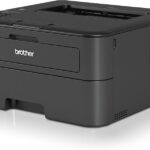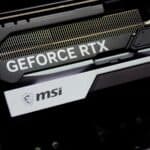Keeping your GPU clean is key to maintaining its performance and lifespan. Dust and debris can build up over time, leading to overheating and reduced efficiency. Regular cleaning of your GPU can prevent these issues and keep your graphics card running smoothly.
Cleaning your GPU is a simple process that you can do at home with a few basic tools. You’ll need compressed air, isopropyl alcohol, and a soft cloth. Start by shutting down your computer and removing the GPU. Use compressed air to blow out dust from the fan and heatsink. Gently wipe down surfaces with a cloth dampened with isopropyl alcohol.
Be careful when cleaning your GPU to avoid damaging sensitive components. Don’t use too much liquid, and never turn on your computer while the GPU is wet. With proper care, you can keep your graphics card clean and functioning at its best.
| Cleaning Tool | Purpose |
|---|---|
| Compressed Air | Remove dust and debris |
| Isopropyl Alcohol | Clean surfaces |
| Soft Cloth | Wipe down components |
Maintaining Your Graphics Card
Your graphics card (GPU) is a workhorse, rendering complex visuals for gaming, video editing, and more. Over time, dust and debris can build up, affecting its performance and lifespan. Cleaning your GPU is easier than you might think. Here’s a step-by-step guide:
What You’ll Need
- Compressed Air: Use canned air with a straw attachment for precision.
- Soft Brushes: A soft-bristled brush, like an anti-static brush or a new paintbrush, is ideal.
- Isopropyl Alcohol (90% or higher): This helps remove stubborn grime.
- Cotton Swabs: Useful for cleaning hard-to-reach areas.
- Screwdriver: Needed to open your computer case and potentially remove the GPU.
- Optional: An anti-static wrist strap can prevent static damage.
Cleaning Steps
- Power Down: Turn off your computer and unplug it from the power source.
- Open the Case: Remove the side panel of your computer case.
- Remove the GPU (Optional): If you need a deeper clean, carefully remove the GPU from its slot. Remember to unplug any power cables connected to it first.
- Use Compressed Air: Blow compressed air into the fans and heatsink of the GPU. Use short bursts of air and avoid spinning the fans too fast.
- Brush Away Dust: Gently brush away any remaining dust with a soft brush.
- Clean with Isopropyl Alcohol (Optional): For stubborn dirt, dampen a cotton swab with isopropyl alcohol and carefully clean the affected areas. Avoid getting any liquid on the circuit board.
- Reassemble: If you removed the GPU, carefully reinsert it into its slot and reconnect any power cables. Close your computer case.
Important Precautions
- Avoid Excessive Force: Be gentle when cleaning to avoid damaging delicate components.
- Don’t Use a Vacuum Cleaner: Vacuum cleaners can create static electricity that can damage your GPU.
- Work in a Well-Ventilated Area: Compressed air and isopropyl alcohol can have strong fumes.
- Let it Dry Completely: If you used isopropyl alcohol, ensure the GPU is completely dry before powering on your computer.
Cleaning Frequency
How often you need to clean your GPU depends on factors like your environment and usage. Here’s a general guideline:
| Usage | Cleaning Frequency |
|---|---|
| Light usage (web browsing, office work) | Every 6-12 months |
| Moderate usage (gaming, video editing) | Every 3-6 months |
| Heavy usage (intense gaming, professional workloads) | Every 1-3 months |
By following these tips, you can keep your GPU clean and running smoothly for years to come.
Safety and Preparation
We all know how important it is to keep our computers clean on the outside, but what about the inside? Dust and other gunk can build up over time, especially on your graphics card (GPU). This can lead to overheating, poor performance, and even shorten the lifespan of your card. The good news is that cleaning your GPU is a fairly simple task that anyone can do with the right tools and a little care. Let’s walk through the process step-by-step.
Before cleaning your GPU, it’s crucial to take safety precautions and gather the right materials. This ensures you protect your computer and clean effectively.
Creating a System Restore Point
A system restore point acts as a safety net for your PC. It lets you undo changes if something goes wrong during cleaning.
To create one:
- Open the Start menu and type “Create a restore point”
- Click “System Protection”
- Select your main drive (usually C:)
- Click “Create”
- Name your restore point and click “Create” again
This process takes just a few minutes. It’s a simple step that can save you hours of trouble later.
Gathering Necessary Materials
You’ll need specific items to clean your GPU safely:
- Microfiber cloth
- Isopropyl alcohol (90% or higher)
- Compressed air
- Anti-static wristband
| Item | Purpose |
|---|---|
| Microfiber cloth | Gently wipes surfaces |
| Isopropyl alcohol | Dissolves tough grime |
| Compressed air | Blows out dust |
| Anti-static wristband | Prevents static damage |
Use only these materials. Household cleaners can damage PC components.
Ensure your workspace is clean and well-lit. Have a small container ready for screws. This organization helps you reassemble everything correctly later.
Cleaning External Components
Proper maintenance of your GPU’s external components is crucial for optimal performance and longevity. Focus on two key areas: the fans and the housing.
Cleaning GPU Fans
GPU fans collect dust and debris over time, affecting cooling efficiency. To clean them:
- Power off your computer and unplug it.
- Remove the graphics card carefully.
- Use compressed air to blow out dust from the fan blades.
- Hold the fans steady while cleaning to prevent damage.
- Wipe fan blades with a microfiber cloth dampened with isopropyl alcohol.
- Let the fans dry completely before reinstalling.
For stubborn dirt, use a cotton swab dipped in alcohol to clean between blades. Be gentle to avoid bending or breaking fan components.
Cleaning the Graphics Card Housing
The GPU housing protects internal components but can accumulate dust and grime. Clean it thoroughly:
- Use compressed air to remove loose dust from the housing surface.
- Dampen a microfiber cloth with isopropyl alcohol.
- Gently wipe down the entire housing, paying attention to crevices.
- For tight spaces, use cotton swabs moistened with alcohol.
- Clean the PCIe connector with a dry microfiber cloth.
Avoid liquid near electrical components. Let the card dry fully before reinstalling. Regular cleaning every 3-6 months helps maintain your GPU’s performance and extends its lifespan.
| Cleaning Tool | Use |
|---|---|
| Compressed Air | Remove loose dust |
| Microfiber Cloth | Wipe surfaces |
| Isopropyl Alcohol | Dissolve stubborn dirt |
| Cotton Swabs | Clean tight spaces |
Internal Cleaning and Thermal Maintenance
Proper internal cleaning and thermal maintenance are crucial for your GPU’s longevity and performance. These processes help prevent overheating and thermal throttling, ensuring optimal function.
Reapplying Thermal Paste
Thermal paste is vital for heat transfer between the GPU chip and cooler. Over time, it can dry out or degrade, reducing cooling efficiency. To reapply:
- Remove the GPU’s cooler carefully.
- Clean off old paste with isopropyl alcohol and lint-free cloth.
- Apply a pea-sized dot of high-quality thermal paste to the center of the GPU chip.
- Reattach the cooler, ensuring even pressure.
Use non-conductive thermal paste to avoid shorts. AMD and NVIDIA GPUs may have slightly different cooler designs, but the process remains similar.
Reapply thermal paste every 2-3 years or if you notice temperature increases.
Maintaining Cooling System
A clean cooling system prevents overheating and maintains peak GPU performance. Follow these steps:
- Use compressed air to blow out dust from fans and heatsinks.
- Clean fan blades with a soft brush or cloth.
- Check thermal pads on VRAM and VRMs. Replace if worn.
- Ensure all fan connections are secure.
| Maintenance Task | Frequency |
|---|---|
| Dust removal | Monthly |
| Deep cleaning | Yearly |
| Fan check | Quarterly |
For water-cooled GPUs, inspect tubes for leaks and clean the radiator. Replace coolant as recommended by the manufacturer.
Regular maintenance helps your GPU run cooler and quieter, potentially extending its lifespan.
Software Considerations for GPU Performance
Optimizing your GPU’s performance involves more than just hardware maintenance. Proper software management plays a crucial role in ensuring your graphics card operates at its best.
Using Display Driver Uninstaller
Display Driver Uninstaller (DDU) is a powerful tool for removing graphics card drivers completely from your system. It’s especially useful when switching between NVIDIA and AMD GPUs or troubleshooting driver issues.
To use DDU effectively:
- Download the latest version from a trusted source
- Boot your PC into Safe Mode
- Run DDU and select your GPU brand
- Choose “Clean and Restart”
DDU removes all traces of old drivers including registry entries and leftover files. This clean slate prevents conflicts with new driver installations. It’s particularly helpful when experiencing performance issues or graphical glitches that persist after standard driver updates.
Performing a Clean Driver Install
After using DDU a clean driver install ensures optimal GPU performance. Here’s how to do it:
- Visit your GPU manufacturer’s website
- Download the latest driver package
- Run the installer and select “Custom Installation”
- Choose “Perform a clean installation”
- Follow the on-screen prompts
This process removes old driver components and installs fresh files. It often resolves issues like stuttering frame rates or unexpected crashes in games. For best results perform a clean install every few major driver updates.
| Driver Installation Method | Pros | Cons |
|---|---|---|
| Standard Update | Quick, easy | May leave old files |
| Clean Install | Thorough, resolves issues | Takes more time |
Regular clean installs help maintain peak GPU performance over time.
Frequently Asked Questions
Cleaning a GPU requires specific techniques and precautions. The following questions address common concerns about maintaining graphics cards safely and effectively.
What is the recommended procedure for cleaning GPU fans?
To clean GPU fans, turn off and unplug your computer. Use compressed air to blow out dust from the fan blades and vents. Hold the fans still while blowing to prevent damage. A soft brush can help remove stubborn debris.
Can a graphics card be safely cleaned with alcohol, and if so, what type should be used?
Yes, you can clean a graphics card with alcohol. Use isopropyl alcohol of at least 90% purity. Apply it to a lint-free cloth and gently wipe the card’s surface. Avoid getting alcohol on electrical components.
What alternatives are available for cleaning a GPU when compressed air is not an option?
When compressed air isn’t available, use a soft brush or microfiber cloth. Gently brush away dust from fans and heatsinks. A vacuum cleaner with a small attachment can also work, but be careful not to touch components.
How often should a GPU be cleaned to maintain its performance?
Clean your GPU every 3-6 months, depending on your environment. Dusty areas may require more frequent cleaning. Check your GPU’s temperature regularly. If it’s running hotter than usual, it might be time for a clean.
What steps should be followed to clean a graphics card memory effectively?
To clean graphics card memory, use compressed air to remove dust from the memory modules. For stubborn dirt, gently wipe with a lint-free cloth dampened with isopropyl alcohol. Be very careful not to bend or damage the memory chips.
What are the best practices for performing a GPU cleaning without disassembly?
To clean a GPU without disassembly, use compressed air to blow out dust from all accessible areas. Focus on vents and finstacks. Use a soft brush to remove any remaining debris. Avoid liquid cleaners unless you can access areas without risking electrical components.
| Cleaning Method | Pros | Cons |
|---|---|---|
| Compressed Air | Quick, safe, effective | May not remove all debris |
| Soft Brush | Precise, good for stubborn dirt | Time-consuming |
| Isopropyl Alcohol | Removes tough grime | Risk of liquid damage if not careful |
| Vacuum Cleaner | Good for large dust buildup | Potential static electricity risk |







